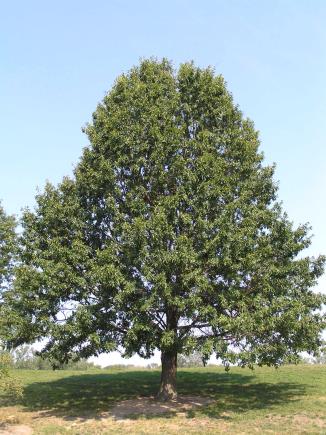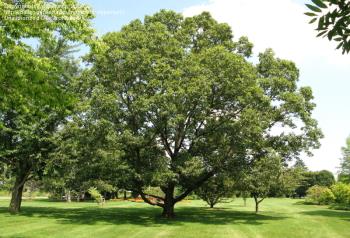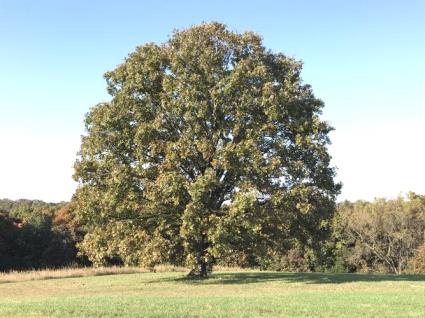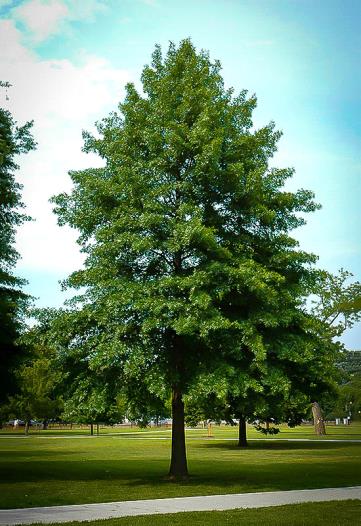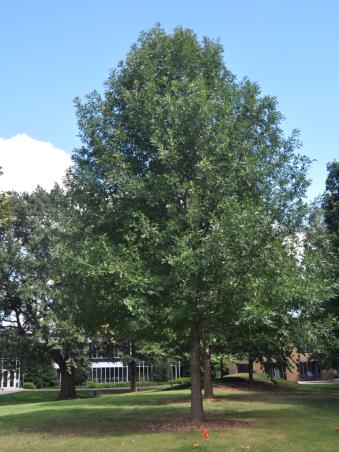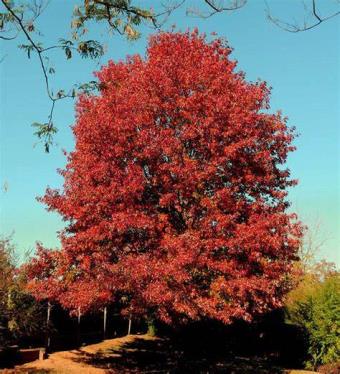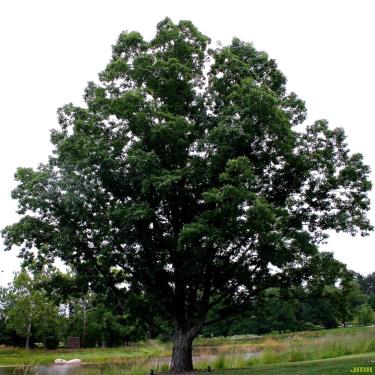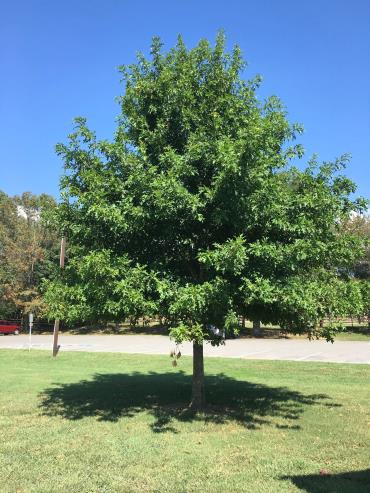Shingle Oak
The common name comes from the early practice of making shingles from the wood. The species name – imbricaria – is derived from the Latin word imbricatus, which means overlapping. The shingle oak is most recognizable for its combination of oak-exclusive acorns and unusual lobed leaves.

